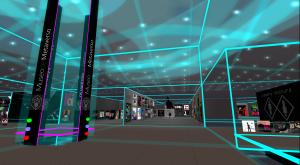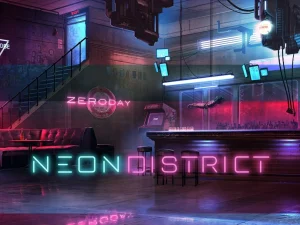The metaverse is a digital virtual world. However, the definition is yet to be definitively set in stone, and the concept is still developing. The metaverse is emerging as a new economic area with the utilization of NFTs, and new businesses are joining the market, testing the concept beyond the area of entertainment. The subject of this article is to define use cases and high points of interest.

The Definition and Reference of the Metaverse
The term “metaverse” is the definition of a three-dimensional virtual online space. The term is the combination of the word “meta,” with the meaning of “beyond,” and the word “universe.”
Nevertheless, the idea of the metaverse remains unclear since so far no one has a unifying definition. Platforms that bear the name the metaverse, however, typically integrate one or a few of the following features:
These allow one to communicate in real-time with individuals within a co-working environment throughout the internet.
They have their own independent economy.
They have connectivity with the real world.
In addition, joining a 3D virtual world within the metaverse typically necessitates a VR headset.
★ Summary
- The metaverse is an internet-connected 3D virtual space.
- The definition as well as the concept of the word continues to evolve.
- A virtual reality headset is usually necessary to use the metaverse.
Why the Metaverse is Getting Noticed
The metaverse is nothing new. Second Life, a pre-cursor to the metaverse, arrived in 2006 and caused quite a stir.
Why the metaverse has resumed the spotlight since late 2021 can be mostly credited to the corporate renaming of Facebook. Announcing the company’s transformation from a social media firm to a company that focuses on the metaverse, Facebook rebranded the corporate name to “Meta” in the month of October 2021. This brought the word “metaverse” to the general public.
In addition, NFTs enabled the value to be given to digital data, allowing assets to be purchased and sold within the metaverse and spawning an independent economy. This has drawn numerous companies to establish new opportunities, thus enhancing the interest people have in the metaverse.
The Relationship with AR and VR
When you read “virtual space,” you can picture AR as well as VR. Let’s discuss how they connect with the metaverse.
What is AR? The Link between AR and the Metaverse
AR stands for “Augmented Reality,” a technology that uses a device to overlay digital data onto the real world.
Since the metaverse is a “internet-based virtual world,” the concept is generally framed asbeing completely distinct from AR, based on the real world. New entrants, however, are creating “AR metaverses” too. Niantic, the company to develop Pokémon GO, is marketing a “Real-World Metaverse” that positions themetaverse in the world we experience. Whereas an AR metaverse is a different concept from the one offered here, what is interesting is that AR is being developed as a kind ofmetaverse as a general concept.
What is Virtual Reality? The Connection between the Metaverse and Virtual Reality
VR is also referred to as “Virtual Reality” and is a three-dimensional virtual world. VR is highly identified with the metaverse, too, with the two oftentimes being confused with one another, overlapping with each other.
VR headsets are most commonly used to enter the metaverse. As such, occasionally “metaverse” is shorthand to refer to the virtual world itself, with “VR” referring to the means or manner of achieving access to it. Other instances, a closed, solo-player world (as one might play on a PlayStation 4) could be referred to as VR, a net-linked world with multiple users as well as economic activity being labeled a metaverse.
Either way, no distinct, defined boundary between the world of VR and the metaverse yet emerges.
The Relationship with Blockchain
Another key to any presentation of the metaverse is blockchain. One is not overstating to say that the current hype about the metaverse is mainly the outcome of blockchain innovation.
What is Blockchain?
Blockchain is the form of database that is utilized in the case of cryptocurrencies. Since the data is distributed across different locations, it is termed a “distributed ledger” as well, thereby making it very hard to hack.
Since “data is virtually unalterable” the blockchain can certify that a certain piece of data is “one-of-a-kind.” Such uniqueness has given value to digital data. The metaverse has now been used as a marketplace to purchase this valuable digital data. Such things as avatars, items, and virtual lands in the metaverse are now purchased and sold as assets that actually translate to value in the real world.
How NFTs are Constructing New Business Models The NFT depends on the strength of the blockchain to authenticate data as one-of-a-kind. They enable one to easily establish the ownership of the digital assets clearly, giving value to the ownership of the original data.
This is the case with “NFT art,” wherein digital art ownership is purchased and sold. As can be imagined, NFT art from Japanese VR creator Aimi Sekiguchi sold around 130 million JPY. Certain NFT art sells at such exorbitant values that it has also drawn interest as one type of investment commodity.
Moreover, assets such as fashion items and weapons can be bought and sold as NFTs, and development is being made to allow acquired NFTs to be usable within the metaverse.
Metaverse Application Scenarios
Even though the metaverse shares a wonderful relationship with the world of entertainment, what ways is it being incorporated? Let us go through some examples.

Gaming
The video game market is the most prominent area seen adopting the metaverse. As an example, the Japanese video game Animal Crossing: New Horizons can be termed as a kind of metaverse in the general context. As opposed to the conventional video games with a set storyline, the player experiences the virtual world with activities such as social interaction.
Decentraland is a virtual world based on a blockchain. Virtual lands can be sold and purchased with the help of cryptocurrency, hosting events in your virtual lands, selling apps, experiencing the festival with your avatar, with the experience almost as real as the actual world.
Virtual Meetings

The virtual world is a 3D virtual environment that can eliminate physical limitations. Understanding this possibility, the company “Meta” has created “Horizon Workrooms,” a service that can host meetings in a virtual environment.
In contrast to video conferencing platforms such as Zoom, this platform enables a plurality of individuals to co-exist within the same virtual environment with VR headsets. Through avatars, it enables a feeling of presence such that the individual on the other end seems to be in front of you, making it a potential bridge over communication barriers with remote working. The user can also annotate the virtual whiteboard within the environment or personalize the environment itself, giving the experience that of working out of the same room with someone who works remotely.
How to Begin in the Metaverse
Then how do you start? This is the state of adoption and usage nowadays.
Orphanages Decline as Adoption Grows in Popularity,
Usage of the metaverse is growing, mainly within the entertainment industry, and companies continue to release “metaverse platforms.” As one example, Cluster, aiming to be “the most accessible metaverse,” lets you build your own world or go to someone else’s world.Regional governments within Japan are building worlds within the platform Cluster, VTubers host live concerts, with a steady accumulation of the user base. In Japan, such metaverse sites as the Cluster are springing up. As yet, however, they are all mutually incompatible; the idea is that eventually they will be mutually compatible to create one gigantic, interlocking digital world.
Legislative Matters Continue The virtual world is, however, a digital universe. Just as with crypto-currency transactions that are relating to the material world, the legal systems trailed as far as virtual world commerce is concerned. This is because, with the existing legal framework, the object of ownership is confined to physical “things.” That is, if someone’s virtual property or avatar is compromised in the metaverse, one can’t look to the law to assist in remedying the situation. Conversely, individuals fear that making the operating entities of the metaverse too liable will chill new innovation among corporations. Either way, what is certain is that there will be a requirement to craft legal systems that apply to virtual spaces.
Conclusion
The metaverse is what 3D virtual worlds are occasionally denominated specifically with native economies that are based on the blockchain. However, since it is still a nascent concept, it must be noted that currently the term is utilized in different ways. The metaverse is being applied across most industries already, with the greatest use coming from the entertainment industry, and use within corporations is beginning to occur as well. The future will be fascinating to behold as the metaverse continues to expand.
Follow us on Facebook for updates and exclusive content! Click here: Each Techs


